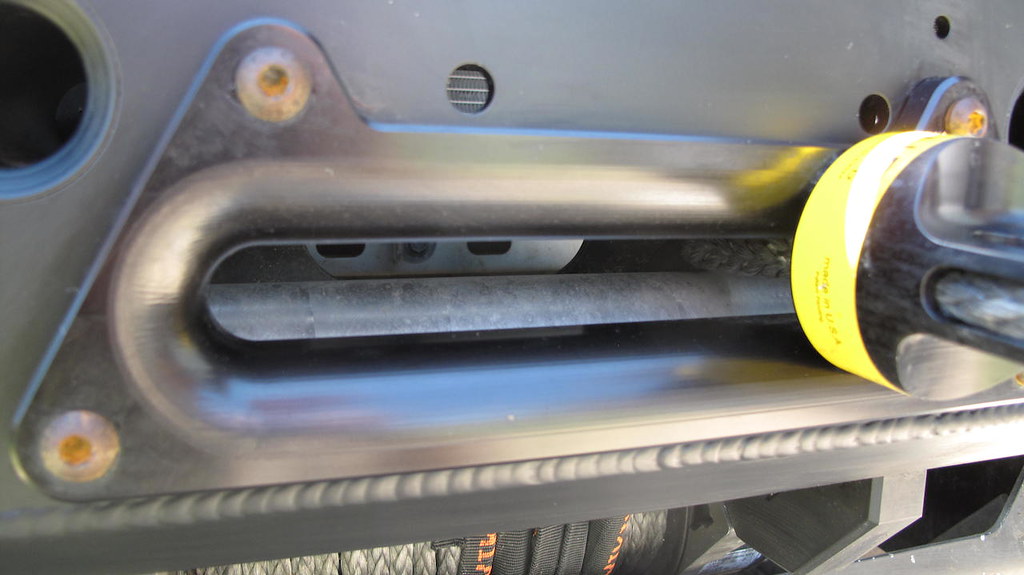The weakest link
Like all of you, my head turns when I spot a well-equipped four-wheel-drive vehicle. The other afternoon, while Roseann and I were in downtown Tucson waiting for the trolley, I noticed in an adjacent parking lot a spiffy-looking gray Jeep Wrangler Rubicon Unlimited. Since the Rubicon Unlimited is one of my all-time favorites, I wandered over to look.
It was indeed spiffy and gleaming, apparently brand new, and from the looks of it the owner had dropped it off at a full-service four-wheel-drive-overlanding-expedition-equipment shop, along with a Platinum Amex, and said, “Equip me.” Suspension lift (a reasonable one), oversize tires (reasonably so), roof rack, Hi-Lift, etc. etc. Up front was a well-made winch bumper—but it in turn was mounted with an odd combination of an off-brand Chinese winch and proper synthetic line. Since the rest of the truck showed a no-expense-spared attitude, I’m not sure what spurt of economy made the owner decide to scrimp on the winch, unless the entire project is strictly for show, in which case a winch is a winch, right? Or it could be as simple as bad advice from the shop, or a forum. (Actually even the synthetic line could be misleading: Discount synthetic winch lines of questionable provenance are becoming increasingly common.)
However, what really caught my eye was the fairlead, an aluminum hawse type, which persistent myth still wrongly claims is the only safe configuration to use with synthetic line. That aside, the chamfers of the line guide on this one were by far the worst I’d ever seen. It’s easy to understand instinctively that running a line over a sharp bend while it’s got three or four thousand pounds of tension on it is not a good thing. Ideally the chamfer or roller over which a winch line—whether steel or synthetic—is run under tension should have a radius of six time the radius of the cable. The edge of this fairlead was barely radiused at all, and on any off-center pull would put huge stress on the line. It was clearly manufactured by a company that either had zero expertise in the physics of how a winch system operates, or zero inclination to build a product with any function other than looks. (Incidentally, in terms of installation, note the slapdash job on the cotter pin securing the winch hook.)
Also note the hook drawn under tension into the aluminum of the fairlead, and the visible scratches in the edge of the opening. Those will cause significant damage to the line when it is run over them under tension. (Incidentally, in terms of installation, note the slapdash job on the cotter pin securing the winch hook.)
It bears repeating as often as necessary: If you install a winch for any reason other than pure fashion, every single component of the system should be of the highest quality. A winch system under load is absolutely dependent on the weakest link in that system, and the result of a failure can be ugly.
Here's a much better-designed hawse fairlead:
And, even better, a roller fairlead:



